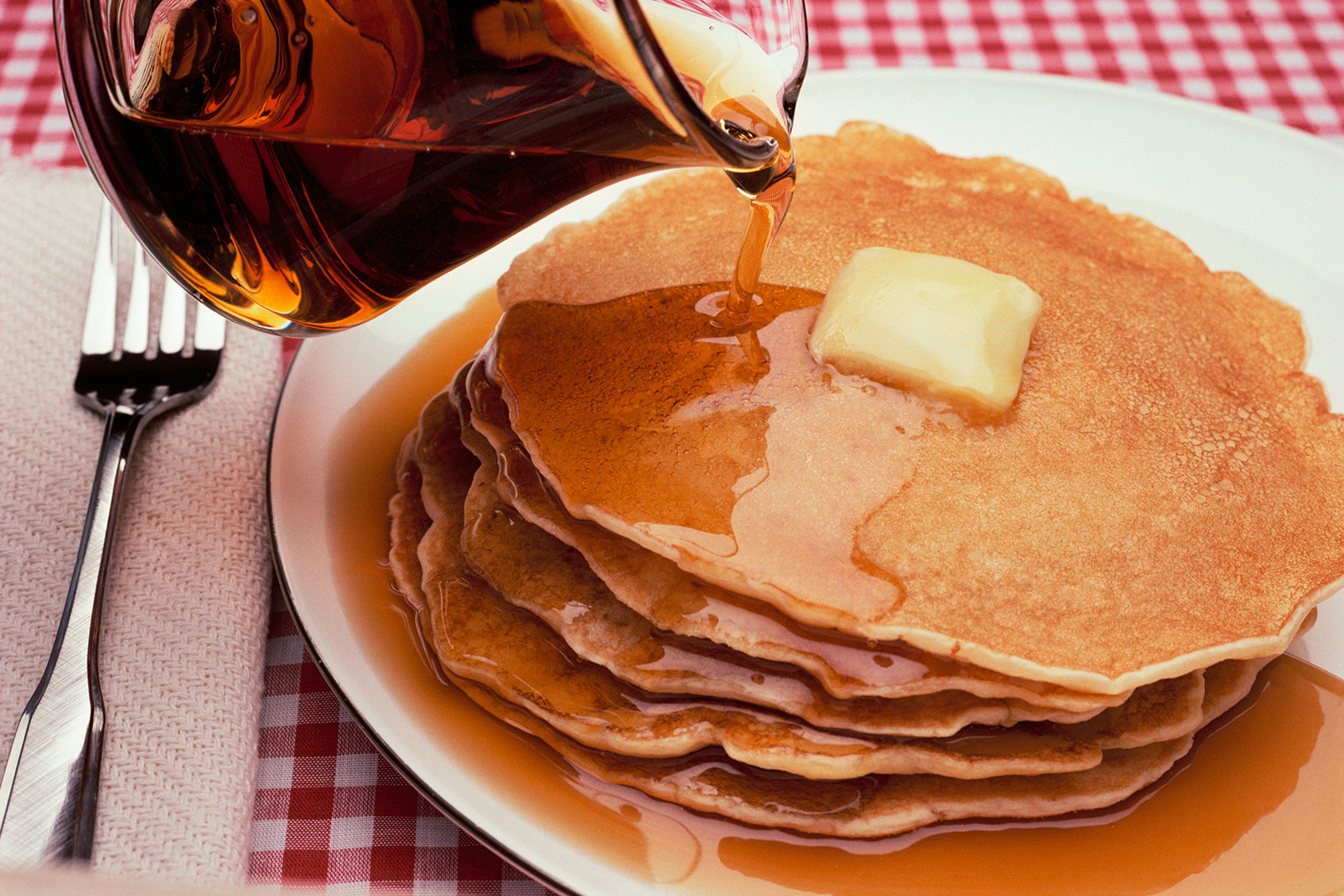For as long as I can recall, my father loved pancakes and French toast with fervor — especially from IHOP. (Truly, he could play 52-card pickup with his IHOP gift cards.)
He’d often order extra of his favorite breakfast items just to have some on hand for mornings when he wanted to feast on them. He’d keep foil-wrapped pancakes and French toast on the table, which he’d save for the morning after.
After some time, though, he began to transition from the IHOP “pancake syrup” packets included with takeout orders and use the higher-grade, “real” maple syrups that I kept in the pantry in those sturdy glass containers. Soon enough, those bottles became “his” — I barely used them, but the level in the bottles would diminish and I knew he’d been dousing his breakfast favorites with them.
Recently, I was reminded by a colleague about the infamous “Maple Syrup Heist” of 2012. Believe it or not, there’s actually an upcoming Amazon Prime show called “The Sticky” (starring Jamie Lee Curtis) which details the whole saga.
While the notion of heists might conjure up movie magic and bank iconography, in this case, maple syrup was the target of choice. Nicholas Reimann at Forbes described it as such: “An early 2010s scheme that made off with about one-eighth of Quebec’s strategic maple syrup supply,” as well as “one of the biggest known heists in Canada’s history.”
Rich Cohen at Vanity Fair delved into the debacle, stating that that in 2012, it was discovered that many of the maple syrup barrels — which would often weight approximately 600 pounds when fully filled — that were being stored at a Quebec warehouse were empty. Not just empty, though, like there had been a leak, but actually refilled with water . . . confirming that something nefarious was clearly at hand.
“540,000 gallons of syrup had been stolen—12.5% of the Reserve—with a street value of $13.4 million,” Cohen wrote. This was clearly no joke, especially for the Canadian authorities.
So how was it done, you ask?
Cohen wrote: “According to the prosecutor, the gang would truck barrels out of the Reserve to a sugar shack where they would siphon the syrup in the way you siphon gasoline from a semi, feeding it, a cask at a time, into their own ramshackle barrels and then re-filling the originals with water. As the operation grew, the masterminds allegedly brought on accomplices and began siphoning the syrup directly from barrels in the Reserve. Nearly 10,000 barrels of syrup were stolen and trucked to points south and east, where the market is free.”
In the end, the ringleader of this plan was ordered to pay a fine of “more than 9 million Canadian dollars,” which is about 7.2 million US dollars, as reported by Reimann.
This is all to say: Real maple syrup is (clearly) something to treat with respect.
The concept of removing sap from a tree and turning into some sort of specialized nectar to adorn breakfast items was, of course, not the original intent. For Feast and Field, Gretchen McCay writes that “The earliest documentation referencing sap collecting by indigenous people in North American dates back to a French explorer in the 16th century. The practice possibly began when Native Americans saw animals licking sap from trees or discovered that the frozen “sapcicles” that formed during winter tasted sweet.”
After some time of harvesting and utilizing the product, the first “blended imitation maple syrup” (containing only less than 50% of actual maple) was introduced in the 1800s — and the rest is history.
Since then, many “maple” products on the market are anything but, instead just consisting of corn syrup or high-fructose corn syrup. Often called “pancake syrup” or some other sort of semantic play-on-words, these types of items often contain no actual maple whatsoever.
Want more great food writing and recipes? Subscribe to Salon Food’s newsletter, The Bite.
While real maple syrup does certainly contain quite a bit of sugar, it’s still preferable in many ways to generic pancake syrup.
Trisha Calvo with Consumer Reports wrote that “in two tablespoons, you get quite a bit of the mineral manganese and the B vitamin riboflavin, plus small amounts of the minerals calcium, potassium, and zinc. In addition, pure maple syrup contains antioxidants.” Conversely, pancake syrup — while actually usually contains a bit less sugar than real maple syrup — has none of the benefits.
Why, then, was the imitation version invented? Well, as with most things in our capitalistic society, it all boils (pun intended) down to cost. It’s much more labor-intensive to produce real maple syrup, hence the “sticker shock” over it. A little jug of real maple can cost up to about $15, while a large bottle of “Pancake syrup” might sell for $5. This article in Pure Maple Syrup notes that “it takes approximately 40 gallons of maple water to create one gallon of pure maple syrup,” which sums it up pretty cleanly.
As Emily Racette Parulski wrote in Taste of Home, “pure maple syrup is simply maple tree sap that’s been boiled down to a thicker consistency. That’s it. Just one ingredient.”
And that right there is the entire reason why maple syrup is such an esteemed, cherished ingredient, dating back to when the indigenous first began to extract it from trees before boiling it into the earliest iteration of the syrup that now cascades down pancake stack galore.
Now, if you’re particularly fond of the nuances and flavors of “pancake syrup” and real maple is a bit too rich for your wallet, then I don’t want to gatekeep your syrup stylings. But if you’re looking for the absolute best product to elevate your breakfast carbs, you really can’t get much better than actual, genuine maple syrup. (It’s even better when it’s in a maple leaf-shaped bottle!)

